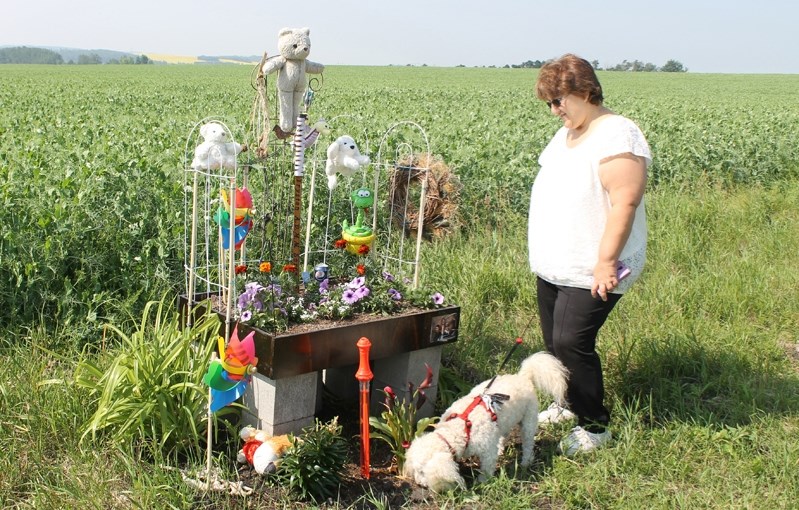The aftermath of the tragic death of longboarder Trystan Sorensen on May 20 continues to haunt his mother Amy. "It's been almost two months, and I still have not had time to cope with the loss of my son," said Amy Sorensen, Trystan's mother.
The aftermath of the tragic death of longboarder Trystan Sorensen on May 20 continues to haunt his mother Amy.
"It's been almost two months, and I still have not had time to cope with the loss of my son," said Amy Sorensen, Trystan's mother. "My son, Harry and I, worked to build something that celebrated Trystan. Harry made a sword for him, and I planted flowers, and continue to come out to visit with him as much as I can."
The Red Deer mother spoke of Trystan's challenges when it came to learning and the curse of an autistic memory.
"My boy could not learn very well, and it took him eight years to learn the alphabet. He knew how to write, but half of the alphabet was printed, and the other half was cursory," said Sorensen. "Because of his disability he was easily swayed by people and sometimes he was taken advantage of, even up to his death."
Trystan, 18, was killed by a hit and run motorist while long boarding on Highway 592 west of Penhold. Jessica Masyk, 25, of Penhold, later turned herself into police and has been charged in connection to the tragedy.
According to his mother, Trystan was 'trained' to be socially appropriate.
"It took a lot of work to teach him how to act in public," said Sorensen. "Anyone who met him would see him as normal, but within two or three hours they would see the cracks in his mental armour."
Her difficulties with Trystan were no different than any other parent.
"We fought, but when he fought he was able to break doors and put holes in walls," said Sorensen. "During one of his rages he put me into the hospital but I promised him that, 'I would fight for him to save him', if I had to."
Trystan left home to live in Penhold in February of 2013 after Trystan and his mother clashed over a request to have one of his friends live with them. At that time, peer pressure put Trystan in a crowd that was 'not good for my son', said the mom.
Two months after her son's death, Sorensen wants to make sure her son's death makes a difference to others in similar situations.
"According to federal law, a child can decide where they want to live at age 16," said Sorensen. "And at age 18, guardianship can come into effect. There is a gap in the system for two years of a teen's life, disabled or not."
Sorensen added there needs to be a change to allow parents of disabled children to apply for guardianship when they are 15 so it can be granted when they turn 16.
"With Trystan, his leaving home put me into a tough situation, which was 14 months of court. I tread the path between governmental bureaucracy, protecting Trystan from himself and others, and a system that did not allow me to exercise my guardianship powers," said Sorensen.
She said that if she had guardianship of Trystan when he was 16, and the AISH status he was granted one week after his death, he would still be alive today.
One memory that will always remain is that of Trystan's friend Roman Black, who accompanied him on his last longboard ride.
"Roman stood guard over Trystan during his memorial as a testament to their friendship in life and I will always treasure that moment," said Sorensen.
